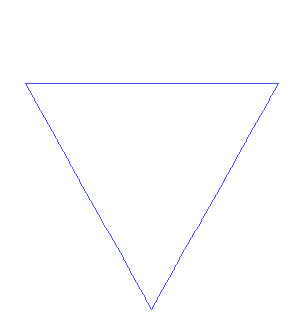Clouds are not spheres, mountains are not cones, coastlines are not circles, and bark is not smooth, nor does lightning travel in a straight line.–Benoît Mandelbrot, from the introduction to The Fractal Geometry of Nature
Before Benoît Mandelbrot, irregular shapes such as the ones discussed in the above quote, were considered by mathematicians to be unusual cases with properties that were too random to study for any sort of pattern. Mandelbrot was the first to develop the tools to explore what he called fractals.
What are fractals? Let's start with Martin Gardner's description of this snowflake curve (Graphic courtesy of António Miguel de Campos):

This is known as the Koch snowflake. In the above picture, the operation is repeated (or, as mathematicians like to say, iterated) only 7 times, but you can repeat the procedure as long as you like. Like many fractals, it repeats itself many times, and develops an amazing pattern.
One of the more interesting qualities of the Koch snowflake is that, no matter how much you magnify it, it will look so similar to any other magnification level that you will have trouble telling how far in (or out) you've zoomed!
The best way to start understand fractals is with a hands-on approach. Here's how to create Koch snowflake cupcake frosting. As an added bonus, Evil Mad Scientist Laboratories will also show you how to make cookies based on the Sierpinski carpet, and even Sierpinski triangle earrings. It's even possible to make a delicious fractal pizza!
Benoît Mandelbrot is known for creating a complex fractal known as the Mandelbrot set, described here in plain English. That explanation does skip over the nature of complex numbers, but fortunately BetterExplained.com explains complex numbers visually and simply. The Mandelbrot set exhibits a more starting complexity at every level than the previous examples, yet still retains an amazing self-similar quality as you zoom deeper.
Basically, Benoît Mandelbrot developed a new set of tools that allowed us to see our current world in a new way, as well as see a whole new world. Thank you, Benoît Mandelbrot, for adding to our understanding of the world.





No Response to "R.I.P. Benoît Mandelbrot (November 20, 1924 - October 14, 2010)"
Post a Comment